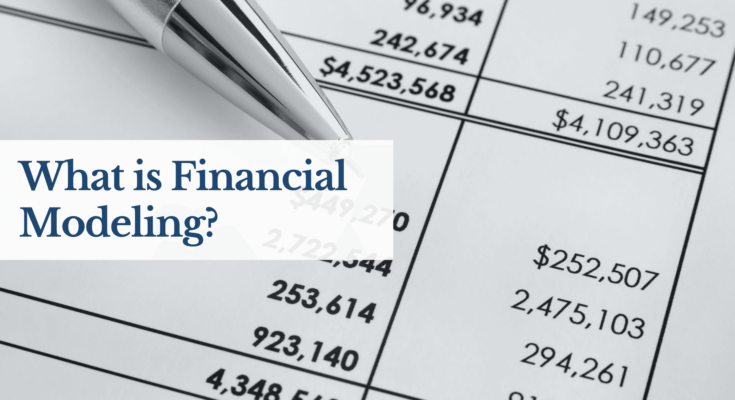Financial modeling and analysis are essential techniques used in various industries to make informed decisions, assess financial performance, and forecast future outcomes. Understanding these concepts is crucial for professionals in finance, accounting, investment banking, and corporate management. In this comprehensive guide, we’ll delve into the intricacies of financial modeling and analysis, exploring their definitions, significance, and applications.
Definition of Financial Modeling
Financial modeling involves creating mathematical representations of financial situations or scenarios to analyze the impact of different variables. These models typically incorporate historical data, assumptions, and forecasts to evaluate potential outcomes.
Definition of Financial Analysis
Financial analysis entails assessing the financial health and performance of companies, projects, or investments. It involves examining financial statements, ratios, and other indicators to gain insights into profitability, liquidity, and solvency.
Importance of Financial Modeling & Analysis
Financial modeling and analysis play a crucial role in strategic decision-making, risk management, and resource allocation. By accurately predicting future financial performance and evaluating investment opportunities, organizations can optimize their operations and maximize shareholder value.
Components of Financial Modeling

Data Collection
Effective financial modeling begins with gathering relevant data from various sources, including financial statements, market research, and economic indicators. Quality data ensures the accuracy and reliability of the model’s outputs.
Assumptions
Financial models rely on assumptions about future events, market conditions, and business drivers. These assumptions guide the forecasting process and influence the model’s results. It’s essential to document assumptions carefully and update them as circumstances change.
Building Financial Statements
Financial models often involve constructing income statements, balance sheets, and cash flow statements based on historical data and projected trends. These statements provide a comprehensive view of an organization’s financial position and performance over time.
Forecasting
Forecasting involves predicting future financial outcomes based on historical data, market trends, and qualitative insights. Techniques such as time series analysis, regression analysis, and scenario planning help analysts develop accurate forecasts and assess potential risks and opportunities.
Techniques Used in Financial Modeling
Sensitivity Analysis
Sensitivity analysis evaluates how changes in key variables or assumptions affect the outcomes of a financial model. By varying inputs within a certain range, analysts can identify the most critical factors driving uncertainty and assess their impact on decision-making.
>>>The Step-by-Step Guide to Building your First Financial Model & Value Companies from Scratch – BUY NOW
Scenario Analysis
Scenario analysis involves simulating different scenarios or situations to understand their potential implications on financial performance. Analysts develop multiple scenarios based on varying assumptions or external factors to assess the range of possible outcomes and their associated risks.
Monte Carlo Simulation
Monte Carlo simulation is a probabilistic technique used to model the uncertainty of future outcomes by generating thousands of random simulations. This method allows analysts to quantify the likelihood of different scenarios and make more informed decisions under uncertainty.
Applications of Financial Modeling & Analysis
Valuation of Companies
Financial modeling is commonly used to estimate the value of companies for investment, acquisition, or divestiture purposes. Valuation techniques such as discounted cash flow (DCF), comparable company analysis (CCA), and precedent transactions analysis (PTA) help investors determine the fair market value of businesses.
Investment Decision Making
Financial modeling assists investors and fund managers in evaluating investment opportunities and assessing their potential returns and risks. By analyzing financial statements, market trends, and risk factors, investors can make informed decisions to optimize their investment portfolios.
Risk Management
Financial modeling plays a crucial role in identifying, assessing, and managing various types of risks, including market risk, credit risk, and operational risk. By incorporating risk factors into financial models, organizations can develop strategies to mitigate risks and safeguard their financial stability.
Budgeting and Planning
Financial modeling is essential for budgeting, forecasting, and strategic planning purposes. By creating detailed financial models that project future revenues, expenses, and cash flows, organizations can set realistic financial targets, allocate resources effectively, and track performance against established goals.
Learning Resources and Courses
“Financial Modeling & Valuation Analyst (FMVA)” – Corporate Finance Institute

The Financial Modeling & Valuation Analyst (FMVA) certification program offered by the Corporate Finance Institute (CFI) provides comprehensive training in financial modeling, valuation, and analysis, covering topics such as Excel skills, financial statement modeling, and business valuation techniques.
“Financial Modeling in Excel” – Udemy

The “Financial Modeling in Excel” course on Udemy offers hands-on training in building financial models using Microsoft Excel, covering essential concepts such as financial statement modeling, forecasting, and valuation techniques, with practical exercises and real-world examples.
“Financial Modeling and Valuation for Investment Banking” – Coursera

The “Financial Modeling and Valuation for Investment Banking” specialization on Coursera, offered by the University of Illinois, provides in-depth instruction in financial modeling, valuation methods, and investment analysis, with a focus on practical applications in investment banking and corporate finance.
Read Also: What is Cryptocurrency and How Does it Work?
Conclusion
In conclusion, financial modeling and analysis are indispensable tools for navigating the complexities of today’s financial landscape, empowering individuals and organizations to make informed decisions, manage risks, and seize opportunities for growth and innovation. By mastering the concepts, techniques, and tools discussed in this guide, individuals can unlock new avenues for success and contribute to the advancement of the finance industry. As we embark on this journey of exploration and discovery, let us embrace the challenges and opportunities that lie ahead, confident in our ability to navigate the ever-changing currents of the financial world with skill, agility, and foresight.
Frequently Asked Questions (FAQ)
Q1: What is financial modeling, and why is it important?
Financial modeling involves creating mathematical representations of financial situations or scenarios to analyze the impact of different variables. It’s important because it helps organizations make informed decisions, assess financial performance, and forecast future outcomes with accuracy and confidence.
Q2: What are the key components of financial modeling?
The key components of financial modeling include data collection, assumptions, building financial statements, and forecasting. These components provide the foundation for developing comprehensive financial models that accurately reflect the underlying dynamics of the business or investment opportunity.
Q3: What techniques are used in financial modeling?
Common techniques used in financial modeling include sensitivity analysis, scenario analysis, and Monte Carlo simulation. These techniques enable analysts to assess the impact of changes in key variables or assumptions, evaluate different scenarios, and quantify the uncertainty of future outcomes.
Q4: What are some popular tools and software for financial modeling?
Popular tools and software for financial modeling include Microsoft Excel, MATLAB, R, Python, and industry-specific software platforms such as the Bloomberg Terminal. These tools offer a wide range of functionalities for data analysis, modeling, and visualization, catering to the diverse needs of finance professionals across various industries.




